45 survey rating scale labels
The Use and "Abuse" of Survey Rating Scales - Verint One topic that comes up frequently is survey rating scales. While an examination of survey rating scales borders on tedious, the correct use of rating scales is critically important - and I believe that scale "abuse" is rampant. ... the case for 5-point vs. 7-point scales, rating scale labels, custom rating scales, listing negative ... Survey Response Scales: How to Choose the Right One - CXL There's more variance in larger scales, which has made the Likert scale the most common survey scale. Dr. Rob Balon advises to "always use the 1-5 scale, with 5 being the positive end and 1 being the negative end. NEVER use 1 as the positive end." Likert's 5 point rating scales. Another great point from Spool's talk touches on Likert Scales.
PDF Menoldbogner Design of Rating Scales in Questionnaires Balanced rating scales are symmetrical, that is, they have the same number of positive and negative categories. Third, the verbal labels should be generally comprehensible, or universal. And fourth, the rating scale categories should suggest apparently equidistant ranges between the categories. Designing a rating scale in this way is by no

Survey rating scale labels
Your Guide to Rating Scale Questions in 2022 - Qualtrics Jan 15, 2021 · 2. Using the right rating scale. The breakdown of each rating scale type above should give you an idea of how you can incorporate these into your survey (see the bolded text for a quick reference). However, if you’re not sure about using one type over another, consider using them both in a test first. Rating Scale: Definition, Methods and examples- Voxco Aug 19, 2021 · 1. Numeric rating scale or NRS. A numeric scale uses numbers to identify the items in a scale. However, not all numbers need to have an attribute attached to them. For example, you can ask your target audience to rate your product from 1 to 5 on a scale. You can put 1 as totally dissatisfied and 5 as totally satisfied. 2. Verbal rating scale or ... How to Label Your 10-Point Scale - Versta Research So if you need to use numeric scales (they're useful in some contexts, but not all!) then keep in mind these three examples of bad, better, and best. This is BAD (the scale goes from 1 to 10): This is BETTER (the scales goes from 0 to 10, but the midpoint is unlabeled): This is BEST (the scale goes from 0 to 10, and the midpoint is labeled):
Survey rating scale labels. Satisfaction Surveys and Questionnaire Rating Scales 2. What measurement scale to use: Level of Satisfaction How well the product or service meets expectations How good or bad the product or service is Level of Importance 3. The number of points on the scale 4. Balanced and unbalanced scales 5. The labels for points on the scale 6. Handling "Don't Knows" 7. How to word the question in an unbiased way Stop Debating the Survey Question Scale: Why a 0-10 Scale is ... Jan 10, 2017 · Using a 5-pt scale, scores tend to cluster around 3 and 4 (and there’s a huge difference in most peoples’ minds between a 3 and 4 on a 5-pt scale) so it’s difficult to discern the true drivers. In the customer’s mind, there’s a difference between a rating of 6 and a rating of 7 (for example) that you can’t capture on a 5-pt scale. Should All Scale Points Be Labeled? - MeasuringU One core question about multipoint rating scales is whether to label all points or just the endpoints. ... (2007) conducted two studies that varied the style of rating scales in a web-based survey with over 5,000 U.S.-based panel respondents answering 16 seven-point items, including seven dietary habits items with endpoints of "Strongly ... Survey rating scales 1-5: Understand your audience better Businesses use survey rating scales to gather information about satisfaction levels, frequency of use, loyalty, and other customer data. Rating scales allow you to compare customer response data to determine which of your products and services are most effective. This data is essential for making informed business decisions across all departments.
Rating scales - Google Surveys Help Google Surveys lets you choose from 5, 7, 10, or 11 stars. There has been a long-lasting debate between 5-pt vs. 7-pt and odd vs. even ( see presentation ). As our surveys are easy to copy and easy... Three Tips for Effectively Designing Rating Scales The most accurate surveys will have a clear and specific label that indicates exactly what each point means 5. Going back to the goals of survey rating scale points and their labels, we want all respondents to easily interpret the meaning of each scale point and for there to be no room for different interpretations between respondents. Likert Scale: What It Is & How to Use It | SurveyMonkey Our methodologists recommend five scale points for a unipolar scale, and seven scale points if you need to use a bipolar scale. Keep it continuous. Response options in a scale should be equally spaced from each other. This can be tricky when using word labels instead of numbers, so make sure you know what your words mean. Keep it inclusive. 1-to-10 rating scale survey template - Survicate Find out what your customers think of you with our 1-to-10 rating scale survey template. The easy, familiar, and intuitive 1-to-10 rating scale has been a long-time staple in user research. Discover your customers' satisfaction levels and let their insights drive your business decisions. 1-to-10 Rating Scale Survey Template FAQ
Which Rating Scales Should I Use? - Relevant Insights Semantic Differential Scale: A 7-point rating scale with endpoints associated with bipolar labels that have semantic meaning (e.g., bipolar adjectives like "friendly" and "unfriendly"). Variations of the Likert and Semantic Differential scales abound. Employee Performance Rating Scales in 2022: Examples & Definitions Overall performance ratings are given on a 5-point scale, observing employees with performances that are: 5 = Leading. 4 = Strong. 3 = Solid. 2 = Building. 1 = Not Meeting Expectations. Goals are also tracked using a 3-point rating scale that measures whether a goal or project was on time, on budget, and accomplished. 20 Free Ready-Made Survey Rating Scale Examples - AidaForm The most commonly used Graphic Scales indicate the answer options on a scale of 1 to 10 and 1 to 5. The stars and numbers represent a quantity that can be averaged and analyzed similarly to Linear Numeric Scales. How would you rate your experience with AidaForm website? 1 - Awful, 3 - Neutral, 5 - Great How to Visualize Survey Results Using Infographics - Venngage Visualizing survey data effectively means using different types of charts for different types of survey results (i.e. binary, rating scale, multiple choice, single choice, or demographic results). Binary results. If your survey questions offer two binary options (for example, “yes” and “no”), a pie chart is the simplest go-to option.
Survey Response Scales - Answer Format and Types of Questions - Explorable Three-point, five-point, and seven-point scales are all included in the umbrella term "rating scale". A rating scale provides more than two options, in which the respondent can answer in neutrality over a question being asked. Examples: 1. Three-point Scales. Good - Fair - Poor. Agree - Undecided - Disagree.
Analyzing and Interpreting Data From Rating Scales The instructions ask the students to rate on a 1 (bad) to 5 (good) scale for each of the below factors, beginning with a global rating for " Overall Satisfaction ". Our goal is to gain more insight into how students' feel about their experience throughout the curriculum. Feedback Form Questions Understanding The Rating Scale
Sample Likert Scales - Marquette University 1 - Never. 2 - Rarely, in less than 10% of the chances when I could have. 3 - Occasionally, in about 30% of the. chances when I could have. 4 - Sometimes, in about 50% of the chances when I could have. 5 - Frequently, in about 70% of the. chances when I could have. 6 - Usually, in about 90% of the chances I could have.
Survey rating scales: numbered vs worded lists | SurveyMonkey With worded labels, the researcher has the freedom to score and label categories however they feel without confusing the respondent. Scaling can also be unbalanced, and the scoring could look something like this: Extremely Good = 10 Very Good = 8 Good = 6 Not Bad = 5 Bad = 3 The Worst = 0

#DidYouKnow that graphic rating #scale is also called continuous rating scale? | Survey Facts ...
Star Rating Question | SurveyMonkey Drag and drop Star Rating into your survey from the BUILDER section of the sidebar. Enter your question text. Adjust the settings under the Edit and Options tab. Click Save. Question Settings Under the Edit tab, you can adjust the following settings specific to the Star Rating question. Colors
Managing Survey Rating Scales (Manage Scales option) Creating a New Scale. Click the Add Scale button to create a new scale. Here you can give your scale a name - this is used when creating a rating scale on a new survey and so it should be meaningful. Next select the size of scale. Currently you can choose from 4, 5, 10 and 11 point scales. Others may be available in the future and if you have ...
Rating and Ranking Levels of Satisfaction in Your Survey A possible scale is then: "Not at all Satisfied," "Partly Satisfied," "Satisfied," "More than Satisfied," "Very Satisfied," numbering 1 to 5 as an interval scale. Rather than a Very Good to Very Poor rating, this set of rating scale survey questions looks at levels of satisfaction. Understanding levels of satisfaction and ...
Rating Scale: Definition, Survey Question Types and Examples Rating Scale Definition Rating scale is defined as a closed-ended survey questionused to represent respondent feedback in a comparative form for specific particular features/products/services. It is one of the most established question types for online and offline surveys where survey respondents are expected to rate an attribute or feature.
What is a Survey Rating Scale? + [Types & Question Examples] A numerical rating scale is typically used to quantify qualitative data such as pain, feelings, product satisfaction, likelihood to recommend, customer loyalty and the like. Usually, the researcher labels the endpoints of the numerical rating scale in terms of the value that is being measured so that both ends represent the extremes of this value.
70+ Rating Scale Questions to Make your Surveys Engaging - SurveySparrow Here is how you can create the best rating scale questions. 1. Choose an appropriate rating scale: We have discussed different types of the rating scale, you need to choose the ones that fit your objectives. If you want to understand how satisfied your customers are, then you can choose the NPS or CSAT scale. 2.
Survey Rating Scales to Guide Survey Respondents Effectively Every survey rating scale option is labelled with words, so the meaning is clear Every option is relevant to the question Language is consistent throughout the whole survey Use scales that balance well (have the same number of options on each side) Consider providing a "Don't know" option or "Prefer not to answer" option
How to Label Response Scale Points in Your Survey | Qualtrics Finally, to ensure that you get the highest-quality data possible, keep these four guidelines in mind as you practice labeling response scales: Ensure each scale point is verbally labeled; Use response options that correspond to the subject of the question; Use consistent language across the entire response scale; Use balanced scales
What's the best rating scale to use on a customer service survey? It changes nothing whether you tell people you have an NPS of +40, that 70% of your customers are satisfied, or that you have a 5-star rating, it's what you're doing about those scores that counts. If your NPS is +40 but last quarter it was +60, you may have problems. But if it's shot up from -20, you're doing amazingly well.
15 Common Rating Scales Explained - MeasuringU Here are 15 scales, in roughly the order of most to least commonly used. 1. Linear Numeric Scale In a linear numeric scale, participants provide some numeric response to a question or statement. This can include things like satisfaction, ease, brand favorability, feature importance, or likelihood to recommend.
Survey Scale: Definitions, Types + [Question Examples] - Formpl A rating scale is a type of survey response scale that allows respondents to match specific qualitative values with different assertions, products, or features. With a rating scale, you simply answer the survey question by picking one of the rating options on the scale. A rating scale can be categorized as ordinal or interva l.
How to Label Your 10-Point Scale - Versta Research So if you need to use numeric scales (they're useful in some contexts, but not all!) then keep in mind these three examples of bad, better, and best. This is BAD (the scale goes from 1 to 10): This is BETTER (the scales goes from 0 to 10, but the midpoint is unlabeled): This is BEST (the scale goes from 0 to 10, and the midpoint is labeled):
Rating Scale: Definition, Methods and examples- Voxco Aug 19, 2021 · 1. Numeric rating scale or NRS. A numeric scale uses numbers to identify the items in a scale. However, not all numbers need to have an attribute attached to them. For example, you can ask your target audience to rate your product from 1 to 5 on a scale. You can put 1 as totally dissatisfied and 5 as totally satisfied. 2. Verbal rating scale or ...
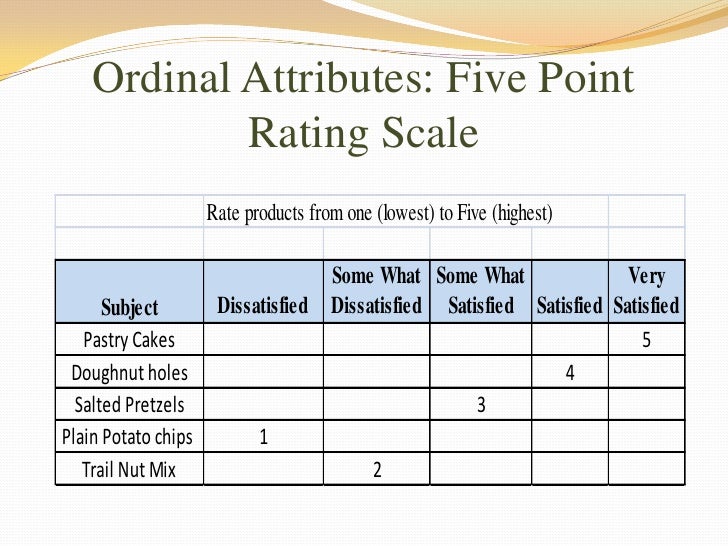
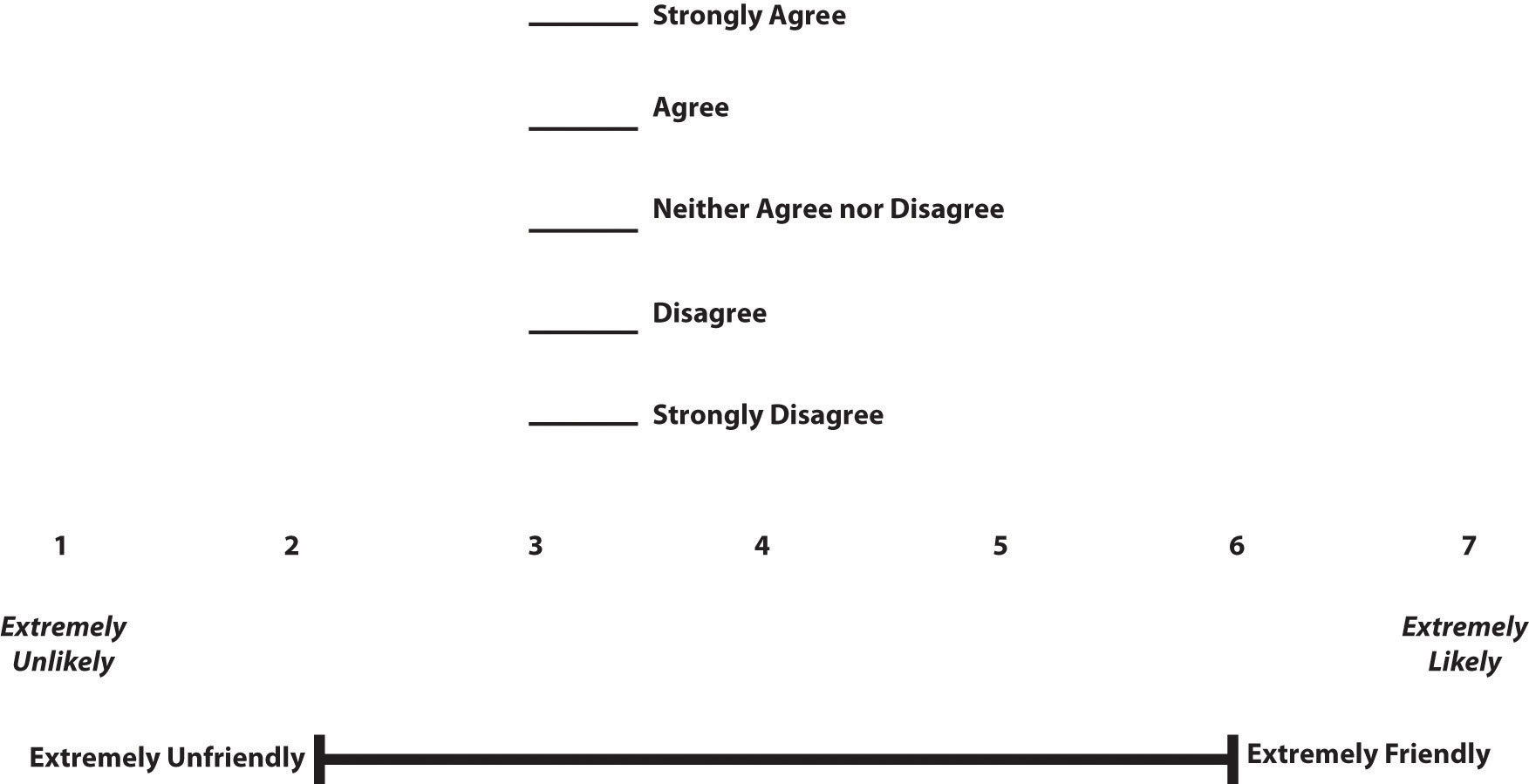

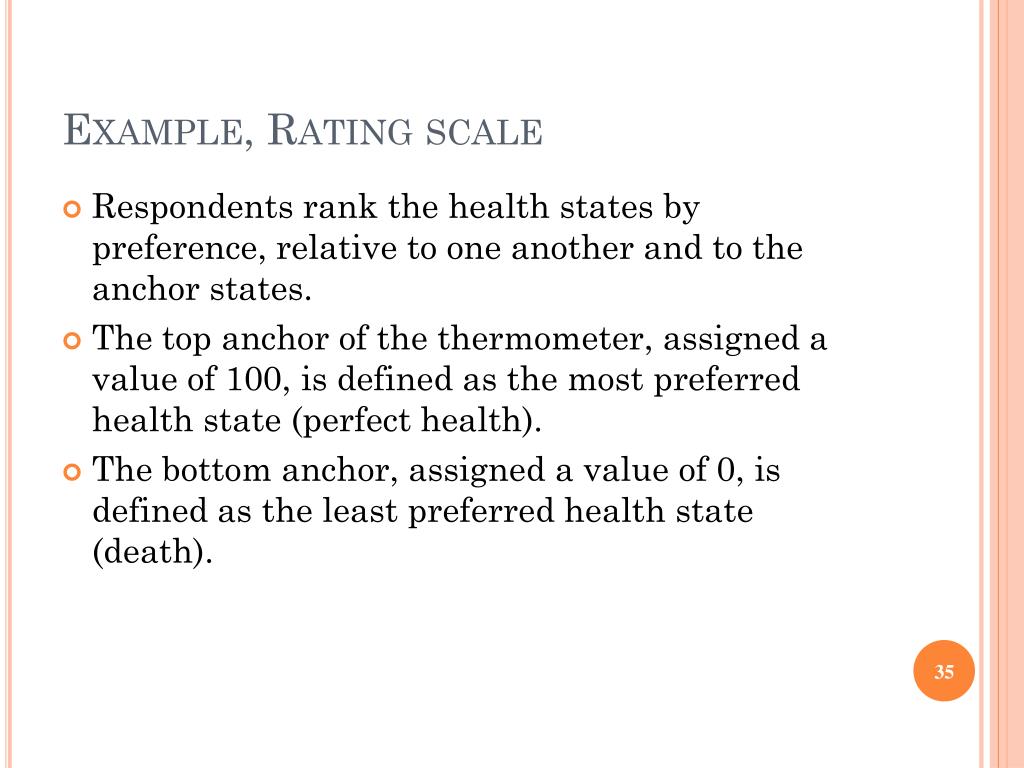

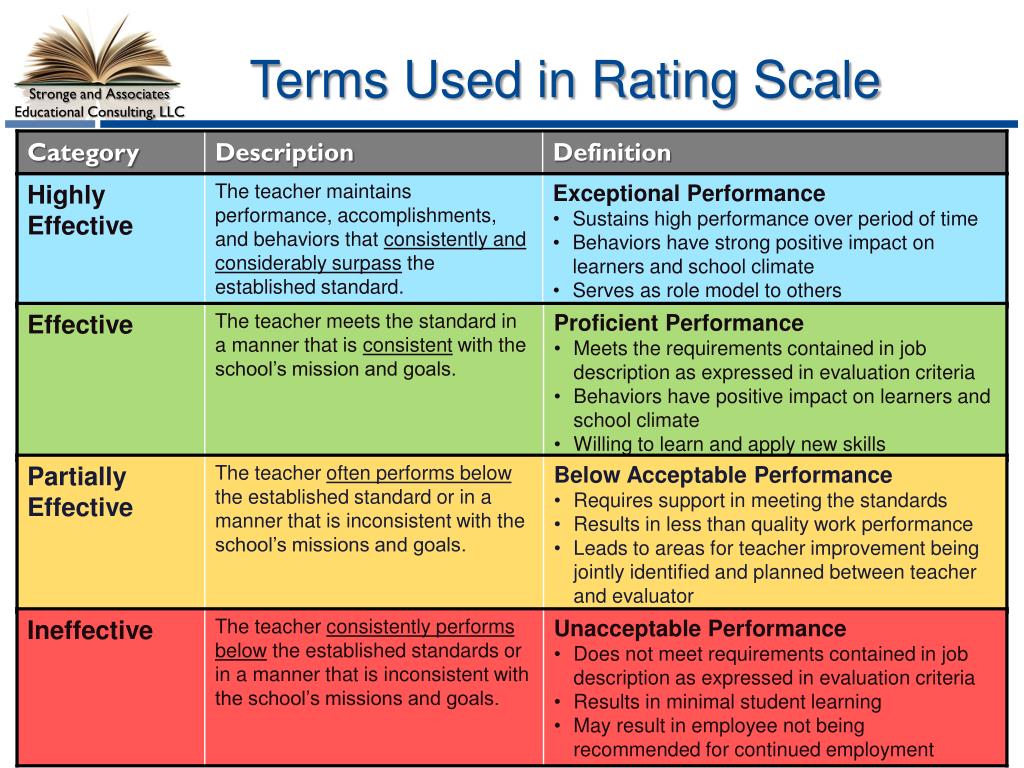



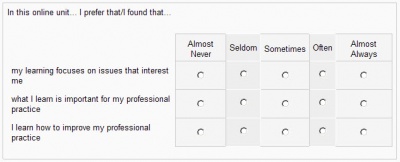
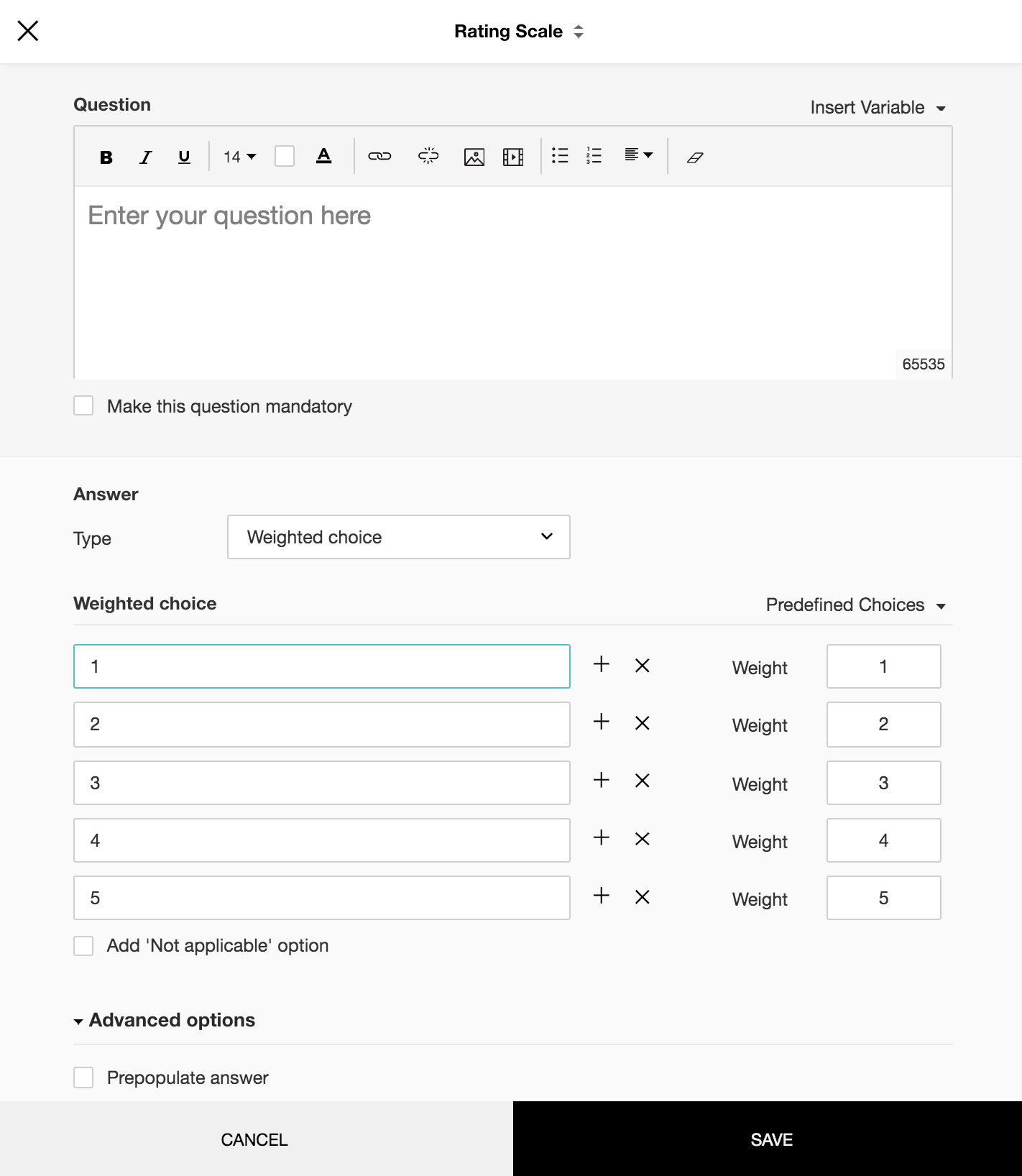


Post a Comment for "45 survey rating scale labels"